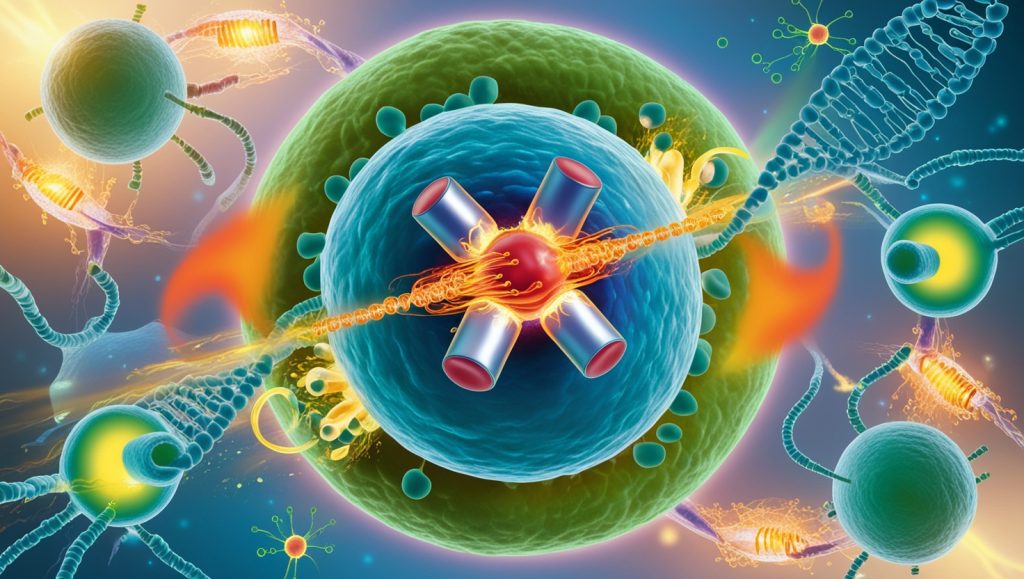
Understanding the connection between bioenergetics and cellular health is vital for appreciating how our cells function and what goes wrong during disease. Bioenergetics, the study of energy flow in biological systems, plays a foundational role in maintaining cellular vitality, managing metabolic processes, and addressing dysfunctions that can lead to disease.
Bioenergetics and Disease
At the heart of cellular life lies energy. Whether it’s the contraction of a muscle, the division of a cell, or the repair of DNA, energy powers every essential biological activity. This energy is derived from bioenergetics, which involves the intricate processes of converting nutrients into usable cellular power, primarily in the form of adenosine triphosphate (ATP).
Without efficient bioenergetic pathways, cells face dysfunction, which can lead to diseases ranging from metabolic syndromes to neurodegenerative conditions. This article explores the intricate relationship between bioenergetics, cellular health, and disease, highlighting the significance of energy balance in maintaining life and preventing illness.
What is Bioenergetics?
Bioenergetics refers to the study of energy transformations in living organisms. It focuses on understanding how cells convert macromolecules like carbohydrates, lipids, and proteins into ATP, the currency of cellular energy. This energy enables cells to perform vital functions such as:
- Maintaining membrane potential
- Synthesizing proteins
- Repairing damaged DNA
- Detoxifying reactive molecules
The primary site of bioenergetic activity in most cells is the mitochondrion, often termed the “powerhouse” of the cell.
The Role of Bioenergetics in Cellular Health
Cells depend on bioenergetics to sustain health and function. Proper energy management ensures:
1. Metabolic Balance
Bioenergetics regulates the balance between anabolic (building) and catabolic (breaking down) pathways, critical for growth and repair.
2. Antioxidant Defense
Efficient energy production minimizes oxidative stress, which can damage cellular components like DNA and proteins.
3. Signal Transduction
Energy influences cellular signaling pathways that dictate responses to environmental stimuli, ensuring adaptability and survival.
4. Cellular Homeostasis
Bioenergetics maintains ionic gradients across membranes, a necessity for processes such as nerve impulses and muscle contractions.
Dysregulation of Bioenergetics in Disease
When bioenergetic systems falter, cells can no longer meet their energy demands, leading to dysfunction. Common bioenergetic disruptions include:
1. Mitochondrial Dysfunction
Mitochondrial abnormalities can result in insufficient ATP production, increased reactive oxygen species (ROS), and cell death. Conditions linked to mitochondrial dysfunction include:
- Parkinson’s disease
- Alzheimer’s disease
- Diabetes mellitus
2. Metabolic Disorders
In diseases like obesity and type 2 diabetes, bioenergetic pathways become inefficient, leading to an accumulation of metabolic byproducts and systemic inflammation.
3. Cancer Metabolism
Cancer cells often exploit bioenergetic pathways to support rapid growth, switching from oxidative phosphorylation to glycolysis, even in oxygen-rich conditions (Warburg effect).
Energy Pathways in Bioenergetics
1. Glycolysis
Glycolysis breaks down glucose into pyruvate, generating small amounts of ATP. It occurs in the cytoplasm and serves as the first step in energy production.
2. Citric Acid Cycle (Krebs Cycle)
In the mitochondria, pyruvate enters the citric acid cycle, generating high-energy molecules like NADH and FADH2.
3. Oxidative Phosphorylation
This pathway produces the bulk of ATP by utilizing oxygen and electrons from NADH and FADH2 in the electron transport chain.
The Role of Bioenergetics in Aging
As organisms age, bioenergetic efficiency often declines. Mitochondria become less effective, leading to increased oxidative stress and cellular damage. This bioenergetic decline has been implicated in aging-related diseases, such as:
- Cardiovascular disease
- Osteoarthritis
- Neurodegeneration
Improving Bioenergetic Health
To maintain Bioenergetic efficiency and support cellular health, consider these strategies:
1. Balanced Nutrition
A diet rich in whole foods, including complex carbohydrates, healthy fats, and proteins, supports efficient energy production.
2. Regular Exercise
Physical activity enhances mitochondrial biogenesis and improves overall bioenergetic capacity.
3. Antioxidants
Foods high in antioxidants, such as berries and green tea, reduce oxidative stress and protect mitochondria.
4. Avoiding Toxins
Limiting exposure to environmental toxins can protect cellular structures involved in energy production.
How Bioenergetics Research Shapes Medicine
Bioenergetics has become a focal point in developing treatments for energy-related disorders. Innovations include:
- Mitochondrial Replacement Therapy for genetic mitochondrial diseases.
- Targeted Antioxidants to reduce mitochondrial ROS.
- Metabolic Modulators to normalize energy pathways in conditions like diabetes and cancer.
The Connection Between Bioenergetics and Immune Health
Immune cells rely heavily on bioenergetics during activation. Processes like glycolysis fuel the rapid energy demands of immune responses, while oxidative phosphorylation sustains prolonged activity. Dysregulated bioenergetics in immune cells can lead to autoimmune diseases or weakened defense mechanisms.
Bioenergetics in Neurodegenerative Diseases
Neurons are particularly energy-dependent, making bioenergetics crucial for brain health. Impaired mitochondrial function is a hallmark of conditions such as:
- Alzheimer’s disease
- Amyotrophic lateral sclerosis (ALS)
- Huntington’s disease
Research suggests that therapies aimed at restoring mitochondrial health could slow or prevent neurodegenerative diseases.
Future Directions in Bioenergetics
Emerging research is uncovering novel insights into bioenergetic processes. Promising directions include:
- Exploring the gut microbiome’s role in systemic energy balance.
- Investigating bioenergetic changes during space travel.
- Developing pharmacological agents to enhance mitochondrial efficiency.
The Role of Bioenergetics in Cellular Health and Disease
Bioenergetics is undeniably at the core of life. It governs how cells generate and use energy, influences cellular resilience, and determines susceptibility to disease. Whether combating cancer, understanding aging, or improving brain health, the study of bioenergetics holds transformative potential for medicine and well-being.
the potential for innovative medical interventions.
allaboutimage.org
Wow, I never realized how much energy our cells need to stay healthy and fight diseases – so fascinating!
slotmahjongways3.com
Bioenergetics plays a crucial role in maintaining cellular health by managing energy production, with disruptions in energy pathways linked to diseases like cancer, neurodegeneration, and metabolic disorders. phamngocson.com
Interesting how bioenergetics plays such a crucial role in everything from disease prevention to aging it’s basically the fuel that keeps our cells running! metforminpharm.com
Bioenergetics is like the fuel for our cells, powering everything from energy production to repairing DNA, and its balance is key to staying healthy! https://bobbykertanegara.com